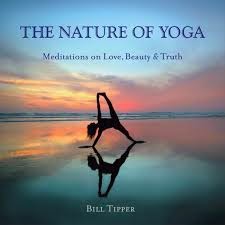You can feel frustrated or relaxed by yoga. It can help you release tension and unwind, or you can end up wanting to bang your head against the wall if you're not as flexible as you might like. Yoga can affect your life in a number ways. The way it specifically affects your life depends on you, your body, your outlook and your goals.
Physical Wellness
Yoga can have a positive affect on your life due to its numerous physical benefits. A regular yoga practice can help increase your level of flexibility, range of motion and muscle strength and improve your posture. Yoga may help you manage the effects of certain chronic health conditions, including cancer and chronic pain, according to the Mayo Clinic. Yoga may even improve your quality of sleep. A study published in 2004 in the journal, "Applied Psychophysiology and Biofeedback," found that yoga improved the quality of sleep and reduced the number of awakenings in study participants with chronic insomnia.
Mental Wellness
Yoga may improve your overall feeling of mental well-being by helping you develop better coping mechanisms during times of stress. It may also reduce the symptoms of certain mental health disorders, such as anxiety and depression. A study published in 2005 in the "Medical Science Monitor" found that distressed women experienced a significant reduction in symptoms of anxiety, depression and perceived stress and reported improved feelings of well-being after participating in an intensive three-month yoga program.
Spiritual Wellness
There's not much clinical evidence to support the claim, but many practitioners of yoga believe that it can provide a number of spiritual benefits. In her book, "Living Your Yoga: Finding the Spiritual in Everyday Life," yoga instructor, physical therapist and psychologist Judith Lasater explains that practicing yoga means "to commit to developing awareness by observing our lives." Through various asanas, pranayama breath techniques and meditation, yoga helps you develop an attitude of mindfulness and an accepting, non-judgmental attitude toward yourself and others. Yoga can support you on your voyage of self-discovery and self-realization, says Dr. Swami Shankardev Saraswati in an article for Yoga Journal.
Negative Impact
As with all physical activities, you run the risk of injury while practicing yoga, especially if you perform the poses incorrectly. And some forms of yoga may cause more harm than good, especially if you have certain medical conditions. Bikram, or "hot," yoga, may increase your risk of dehydration or heat stroke and should not be performed if you have a heart condition or are elderly or nursing, according to Dr. Roshini Raj in an interview with CNN Health's The Chart. When in doubt, consult your doctor to determine if yoga is right for your physical condition.

